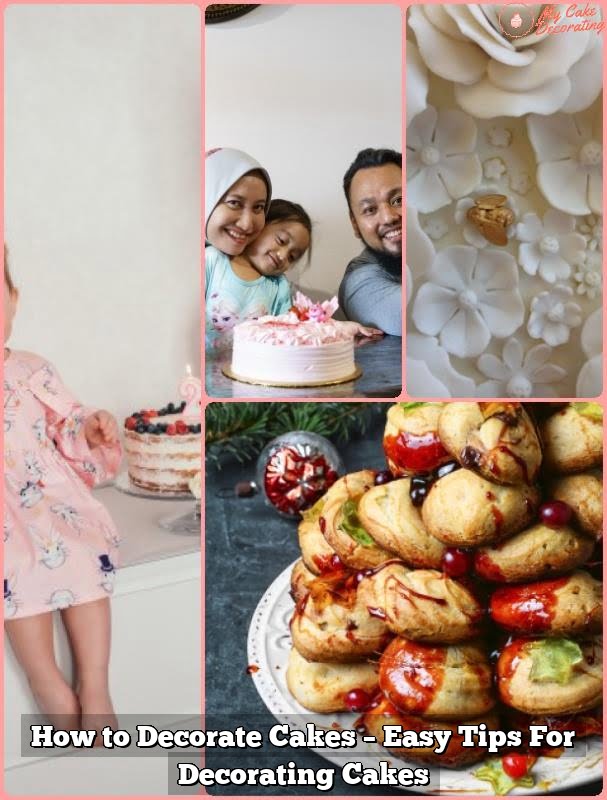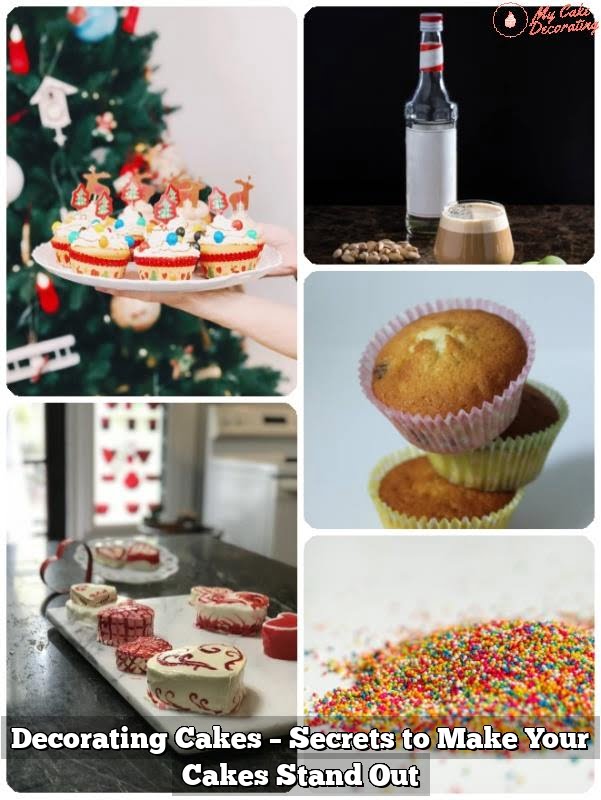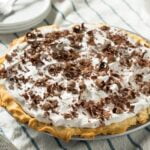Have you ever wondered what is used to decorate cakes and create those beautiful edible works of art? Cake decoration is not only a delightful finishing touch to a delicious dessert but also an intricate and creative art form.
From using fondant and gum paste to piping and airbrushing, cake decorating involves a wide array of techniques and materials that make each cake unique. In this article, we will delve into the world of cake decoration, discussing the essential tools and equipment, edible and non-edible decorations, popular trends, personalized options, and tips for beginners in mastering the sweet art of cake decoration.
The importance of cake decoration in the culinary world cannot be overstated. It adds visual appeal to a cake, turning it from a simple dessert into a stunning centerpiece for any occasion. The creativity and artistic skill involved in cake decorating allows bakers to express their individuality and personalize their creations according to a specific theme or event.
Whether it’s for birthdays, weddings, anniversaries, or any other special celebration, cake decoration plays a crucial role in creating memorable moments. Each edible masterpiece tells a story through its design, colors, textures, and flavors. In the following sections, we will explore the various elements that contribute to the delectable art form of cake decoration – from essential tools and equipment to the latest trends impacting the industry.
Essential Tools and Equipment for Cake Decoration
When it comes to cake decoration, having the right tools and equipment is essential for bringing your creative vision to life. Whether you’re a professional baker or someone who enjoys baking as a hobby, having the proper tools can make all the difference in achieving beautifully decorated cakes. In this section, we will explore some of the essential tools and equipment that are commonly used in cake decoration.
Basic Tools for Cake Decoration
One of the most basic tools for cake decoration is a turntable, which allows for easy access to all sides of the cake while decorating. Additionally, offset spatulas and bench scrapers are indispensable for smoothing out frosting and creating clean lines on the cake’s surface. Piping bags and tips are also crucial for creating intricate designs and adding details to your cakes.
Specialized Equipment for Advanced Techniques
For those looking to expand their cake decoration skills, investing in specialized equipment such as an airbrush machine can take your cakes to the next level. Airbrushing allows for smooth color transitions and stunning effects that can elevate the overall look of your cake. Other specialized equipment like fondant rollers, impression mats, and edible printers can also open up endless possibilities for creative cake designs.
Cake Decorating Kits
For beginners or those looking to streamline their cake decoration process, investing in a comprehensive decorating kit may be beneficial. These kits often include a variety of tips, piping bags, spatulas, and other essential tools all in one convenient package. This can be a cost-effective way to gather all the necessary items without having to purchase them separately.
Having these essential tools and equipment ready will enable you to unleash your creativity when it comes to decorating cakes. By using these foundational pieces, you’ll be well-equipped to learn various techniques while honing your skills as a cake decorator.
Types of Edible Decorations for Cakes
When it comes to decorating cakes, using edible decorations adds an extra layer of creativity and flavor to the design. Edible decorations are not only visually appealing but also enhance the taste and texture of the cake. In this section, we will explore some of the most popular types of edible decorations that are used to decorate cakes, and their versatility in cake design.
Fondant
One of the most common edible decorations used for cake design is fondant. Fondant is a versatile sugar paste that can be rolled out and draped over a cake to create a smooth and flawless surface. It can also be shaped into intricate designs, molded into figurines, or cut into shapes to add dimension and visual interest to the cake.
Gum Paste
Gum paste is another popular edible decoration for cakes. Similar to fondant, gum paste can be rolled out and shaped into various decorative elements such as flowers, leaves, and other intricate details. The advantage of gum paste is that it hardens when dried, making it ideal for creating delicate, realistic-looking decorations that can stand on top of a cake without wilting.
Edible Flowers
Using real flowers as edible decorations for cakes has become a growing trend in cake design. Edible flowers offer a fresh and natural touch to cake designs and are perfect for adding a pop of color and elegance to any celebration. Flowers such as roses, pansies, lavender, and violets are popular choices for adorning cakes.
These edible decorations provide endless possibilities for creating stunning and delicious works of art. Whether it’s covering a cake with fondant for a smooth finish or crafting intricate gum paste flowers for a wedding cake, these edible elements are essential tools in the world of cake decoration.
Non-Edible Decorations for Cakes
When it comes to decorating cakes, the options are endless. While edible decorations are a popular choice for adding flair to cakes, non-edible decorations also play a crucial role in enhancing the overall look and feel of a cake design. From cake toppers to edible glitter, these non-edible decorations are used to add that finishing touch to a beautifully crafted cake.
Here are some common non-edible decorations that are frequently used in cake decoration:
- Cake Toppers: Whether it’s a traditional bride and groom figurine for a wedding cake or a fun cartoon character for a birthday cake, cake toppers are a popular choice for adding personality and charm to any celebration cake.
- Ribbons: Ribbons can be used to add an elegant and decorative touch to cakes. They come in various colors, widths, and materials, making them versatile for different cake designs.
- Edible Glitter: While not technically edible, edible glitter adds sparkle and shine to cakes, making them perfect for special occasions like weddings or New Year’s Eve celebrations.
These non-edible decorations not only elevate the visual appeal of the cake but also provide an opportunity for personalization and creativity in cake design. When combined with edible decorations, they can create stunning and unique cake designs that are sure to impress any crowd.
Techniques for Cake Decoration
One of the most important aspects of cake decoration is mastering various techniques that can bring your cake design to life. Whether you’re a professional pastry chef or a home baker, understanding these techniques can elevate your skills and create visually stunning cakes. Here are some essential techniques for cake decoration:
- Piping: Piping is the process of using a pastry bag to apply buttercream, royal icing, or other frostings to create intricate designs on cakes. This technique allows for endless possibilities, from simple borders to elaborate floral patterns.
- Stenciling: Stenciling involves using a template to create designs on the surface of a cake with powdered sugar, cocoa powder, or edible spray paint. It’s a great way to add detail and texture to your cakes.
- Airbrushing: Airbrushing is a popular technique for creating smooth gradients and vibrant colors on cakes. With an airbrush gun and food coloring, you can achieve professional-looking results with ease.
Mastering these techniques takes practice and patience, but the results are worth it. For those just starting out in cake decoration, it’s important to experiment with different tools and materials to find which techniques work best for you. Don’t be afraid to make mistakes – learning from trial and error is all part of the creative process.
As the world of cake decoration continues to evolve, new techniques are constantly being introduced. Keep an eye out for workshops and tutorials that can help you stay updated with the latest trends in cake decoration – after all, there’s always something new to learn in this delicious art form.
Trends in Cake Decoration
The art of cake decoration is constantly evolving, with new trends emerging each year. From whimsical designs to elegant and sophisticated creations, cake decoration trends are a reflection of current tastes and styles. One of the most exciting aspects of following cake decoration trends is the opportunity to get inspired and experiment with new techniques and designs. In this section, we will explore some of the current trends in cake decoration that are captivating bakers and dessert enthusiasts alike.
One popular trend in cake decoration is the rise of geode cakes. These stunning creations mimic the appearance of natural geodes, featuring vibrant, crystalline patterns made from edible sugar or rock candy. Geode cakes add a touch of glamour and elegance to any event, making them a sought-after choice for weddings and other special occasions. The intricate detailing and bold colors make geode cakes a true showstopper at any celebration.
Another trend that has gained popularity in recent years is the concept of drip cakes. These whimsical confections feature colorful drips of ganache or frosting cascading down the sides of the cake, creating a playful and modern look.
Drip cakes offer endless possibilities for customization, as bakers can experiment with different colors and flavors to create visually stunning designs. Whether it’s a vibrant rainbow drip or a sophisticated gold drip, these cakes are sure to be a hit at any gathering.
In addition to geode cakes and drip cakes, naked cakes have also become a beloved trend in the world of cake decoration. These rustic-chic creations are characterized by their minimal frosting, allowing the layers of cake to peek through for a charmingly imperfect yet beautiful aesthetic. Naked cakes are often adorned with fresh flowers, fruits, or other natural elements, adding a touch of organic charm to these delightful desserts.
As cake decoration continues to evolve, it’s clear that there is no shortage of creativity and innovation in this delectable art form. Bakers and decorators around the world continue to push boundaries and redefine what is possible when it comes to creating visually stunning and delicious masterpieces.
By staying up-to-date on the latest trends in cake decoration, both professionals and hobbyists alike can find inspiration to unleash their creativity and elevate their baking skills. Whether it’s embracing the elegance of geode cakes, playing with the whimsy of drip designs, or channeling the rustic charm of naked cakes, there’s something for everyone to explore in this sweet world of cake decoration.
Customizing Cakes With Personalized Decorations
When it comes to celebrating special occasions, a beautifully decorated cake can be the centerpiece of the event. Customizing cakes with personalized decorations adds an extra touch of sentiment and thoughtfulness to the sweet treat. Whether it’s a birthday, wedding, or anniversary, personalized cake decorations can make the celebration even more memorable.
One popular way to personalize cake decorations is by incorporating the recipient’s favorite colors, themes, or hobbies into the design. For example, a sports enthusiast may appreciate a cake decorated with edible fondant soccer balls or basketballs, while someone who loves flowers might enjoy a cake adorned with sugar paste floral decorations. By tailoring the decorations to reflect the individual’s interests and personality, the cake becomes more than just a dessert-it becomes a meaningful symbol of celebration.
Another trend in personalized cake decoration is the use of edible images or printed edible frosting sheets. These allow for custom pictures, messages, or designs to be transferred onto the cake’s surface with remarkable precision and clarity. This technology has opened up endless possibilities for creating unique and personal cake decorations that truly capture the spirit of any occasion.
Personalized cake decorations not only add an element of surprise and delight but also serve as lasting mementos of cherished moments. They allow for creativity and expression in ways that resonate deeply with both bakers and recipients alike.
| Personalized Decorations | Benefits |
|---|---|
| Tailored designs based on interests | Adds sentiment and thoughtfulness |
| Edible images/printed frosting sheets | Create unique and personal designs |
| Lasting mementos | Capture cherished moments |
Tips for Beginners in Cake Decoration
Aspiring cake decorators often find themselves overwhelmed by the wide array of tools and techniques available for creating beautifully decorated cakes. Whether it’s for a special occasion or simply for the love of baking, getting started on cake decoration can be both exciting and challenging. For beginners in the art of cake decoration, it is essential to have the right guidance and tips to make the learning process more enjoyable and less daunting.
One of the first tips for beginners in cake decoration is to invest in quality tools and equipment. A few essential tools to start with include a rotating cake stand, offset spatula, piping bags, and various decorating tips. These basic tools are crucial for creating smooth frosting, precise designs, and intricate details on your cakes.
Another important tip is to practice patience and persistence. Cake decorating is truly an art form that takes time to master. It’s important not to get discouraged by initial failures or mistakes, as they are a natural part of the learning process. By practicing regularly and approaching each project with determination, beginners can gradually improve their skills and confidence in cake decoration.
Furthermore, seeking inspiration from experienced cake decorators, tutorials, and online resources can greatly benefit beginners in enhancing their understanding of different techniques and design ideas. There are countless resources available that provide step-by-step guides, video tutorials, and valuable insights into what is used to decorate cakes effectively. By exploring these resources, beginner decorators can expand their knowledge and gain inspiration for their own unique creations.
Conclusion
In conclusion, cake decoration is truly an art form that adds beauty and creativity to the world of culinary delights. From essential tools and equipment to a variety of edible and non-edible decorations, cake decoration offers endless possibilities for expressing creativity and individuality. Whether it’s mastering piping techniques or staying up-to-date with the latest trends, cake decoration allows for continuous learning and innovation in the kitchen.
The versatility of edible decorations such as fondant, gum paste, and edible flowers provides endless opportunities for intricate designs and personalized touches. Non-edible decorations like cake toppers, ribbons, and edible glitter add a finishing touch to any cake design, making it a feast for both the eyes and the taste buds. Mastering different techniques like stenciling, airbrushing, and piping allows for the creation of stunning designs that are sure to impress any crowd.
For beginners venturing into the world of cake decoration, it’s important to remember that practice makes perfect. Embracing challenges and learning from mistakes is all part of the journey in honing your skills. Additionally, exploring personalized decorations for special occasions adds a sentimental touch to any celebration. Overall, cake decoration is not just about making a visually appealing dessert; it’s about creating memorable experiences through delicious works of art that are meant to be savored and enjoyed.
Frequently Asked Questions
What Are the Things Used to Decorate Cake?
Things commonly used to decorate cakes include icing, frosting, piping bags and tips, edible sprinkles, fondant, edible glitter, chocolate ganache, fresh fruits, and edible flowers.
What Ingredients Are Used to Decorate Cakes?
Ingredients often used to decorate cakes include powdered sugar (for icing), butter or shortening (for frosting), food coloring or gel (to color the icing), decorative sugars or nonpareils, and sometimes marzipan or gum paste for creating intricate decorations.
What Is the Thing Called to Decorate Cake?
The tools used to decorate a cake are often referred to as “cake decorating supplies” and can include items such as icing spatulas, offset spatulas, cake turntables for easy access when decorating from all angles, fondant smoothers for creating smooth finishes, and various types of pastry brushes for applying edible glazes or decorations.

Welcome to my blog about home and family. This blog is a place where I will share my thoughts, ideas, and experiences related to these important topics. I am a stay-at-home mom with two young children. I hope you enjoy reading it! and may find some helpful tips and ideas that will make your home and family life even better!





